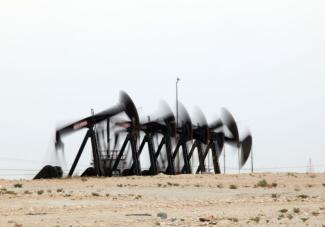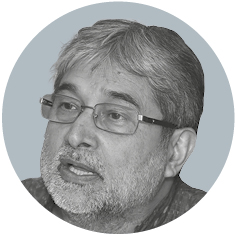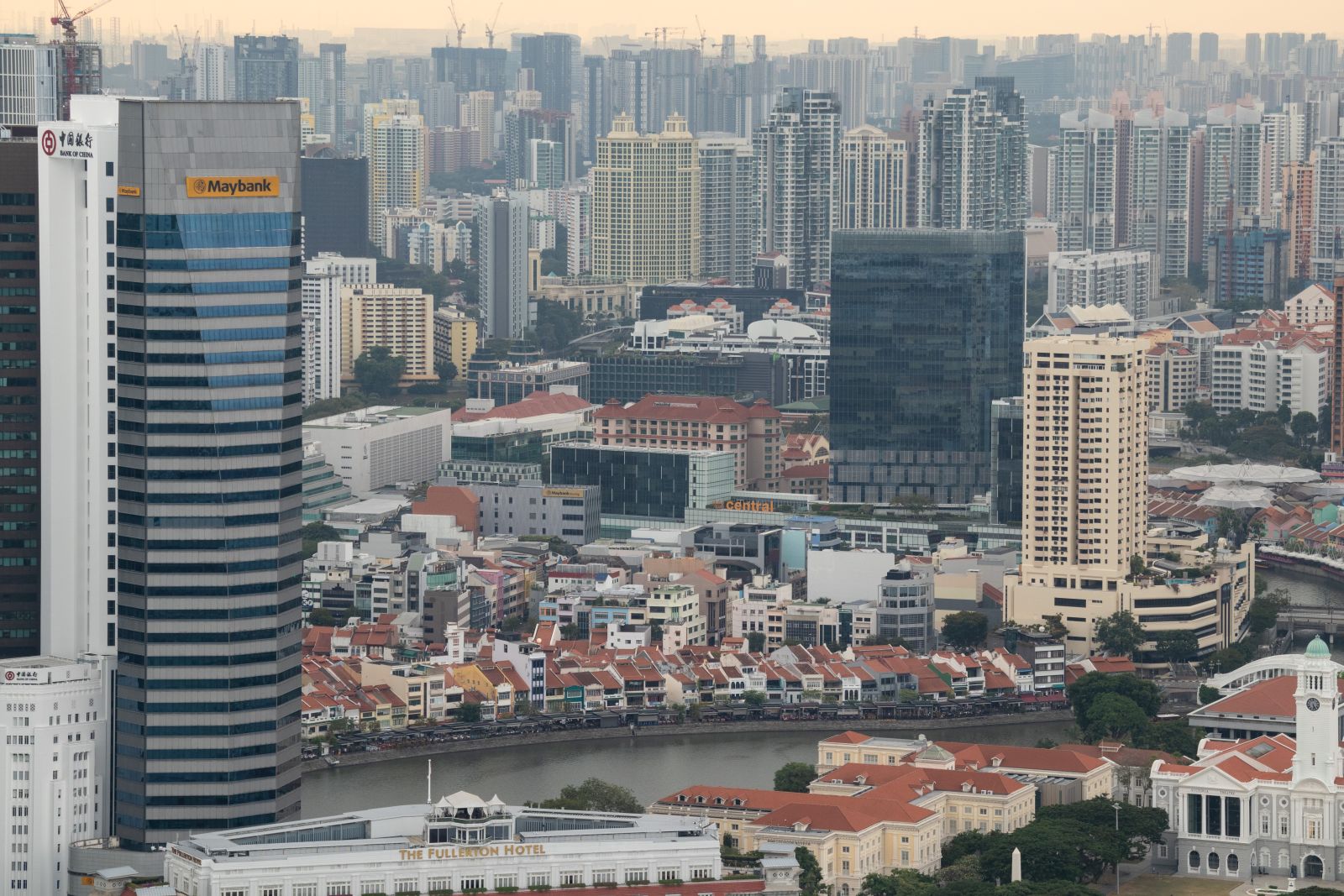Relevant reading
Oil and development

In the mid-1990s, critical voices dominated the debate. An empirical study that covered 97 developing countries from 1971 to 1989 (Sachs and Warner, 1995), noted, for instance, that resource-rich economies grew more slowly than resource-poor ones. The researchers found that high oil revenues fuelled greed and rivalry within the elite. Moreover, the commodity boom led to the appreciation of national currencies, making non-oil exports more expensive on the global market. This effect is known as “Dutch disease”. It hampers the development of domestic industries, thus compounding the oil-dependency.
Karl (1997) carried the argument further in his much-quoted work “The paradox of plenty”. He contended that oil wealth creates an incentive structure that inhibits development. Massive revenues from oil exports mean there is no need for a government to promote development to generate income. Oil revenues become rents – income that does not require efforts. A system of patronage helps to create a social class that profits from public contracts, civil-service jobs and other advantages that result directly from the government’s oil revenues. The primary goal of that class is to maximise its “rentier” income. Corruption is an intrinsic feature of rentier states.
Eifert, Gelb and Tallroth (2002) took a different approach. They saw the key challenge in managing oil revenues. Because the oil price is twice as volatile as those of other commodities, price shocks are hard to predict, which makes it difficult to plan government budgets as revenues are uncertain, and boom and bust cycles must be avoided. Moreover, savings should be made for future generations.
Many oil states, however, were over-optimistic when assessing future revenues in times of high prices and kept increasing their spending. Such expenditure became unsustainable when prices fell again, so many governments took on more debt. The authors showed how saving during a high-price phase and pursuing a systematically anti-cyclical fiscal policy can help an oil producing country guard against oil price crises and manage its oil wealth in an economically sustainable fashion. They took Norway as an example.
Isham, Woolcock, Pritchett and Busby (2005) examined the connection between resource wealth and the quality of institutions. Their study of 90 developing countries from 1974 to 1997 concluded that countries that export manufactured goods generally have better governance than those that export commodities. In the authors’ view, the rent effect of natural resources undermines democracy, delays modernisation and compounds problems of inequality. States that can afford to leave people pretty much untaxed are less accountable than states that must show tax payers results.
On the one hand, the oil states can keep the people happy with welfare programmes and transfer payments; on the other, they have the means to suppress opposition by force. The elites have little interest in developing and diversifying the economy, since doing so would create alternative sources of power (urban workforce, middle class, private-sector enterprises), which could undermine the fundament of the rentier state.
Auty (2012) offers a good overview of the literature on the topic of “oil and development” and the political economy of oil in the Middle East and North Africa (MENA) in the past 40 years. In the high-price phase from 1973 to 1982, high profits from oil exports largely served to expand the public sector in the MENA region. The ruling elite fed its patronage networks and thus consolidated its political power. However, the state administrations became ever more inefficient.
Populous oil states like Algeria, Iran and Iraq pursued a strategy of state-controlled import-substitution, trying to make the most of oil money by establishing petrochemical and steel industries. But when the oil prices started to fall in 1985, they shelved investment plans and cut back large-scale social programmes, which was far more difficult politically.
In the belief that prices would rise again soon, the governments also started dipping into their foreign-exchange reserves, and they took loans to finance budget deficits. Accordingly, external debt more than trebled in the MENA region from 1985 to 1996. But lessons were learned. In the high-price phase from 1999 onwards, governments saved more and reduced their debt levels. A number of countries followed Norway’s example by establishing sovereign wealth funds, into which they invested extra revenues. What did not happen, however, were structural reforms that would have transformed rentier economies into productivity-driven economies.
Heilbrunn (2014), by contrast, emphasised the opportunities presented by oil wealth. In “Oil, democracy and development in Africa” he concluded that over decades of oil production, many countries underwent a subtle economic transformation. According to him, oil money leads to pockets of capital accumulation, so domestic investments were attracted. A domestic market emerged for financial and insurance services, homebuilding, consumer goods and the entire range of products that the oil industry needs. These new activities sparked the development of a middle class. Businesses engendered by oil money, moreover, made it vital to define rules and ensure that new economic sectors run smoothly. The consequence was institutional development, which, according to Heilbrunn, turned out better in countries with a favourable historical background.
With money at their disposal, many African governments spent more on poverty reduction, education and health care, which in turn opened up new economic prospects for the people. Heilbrunn does not deny that the oil boom had negative impacts, including Dutch disease, corruption and resource-motivated armed conflict, on some countries. Overall, however, he concludes that oil production is a dynamic and open process that can steer a country in different directions.
IMF economists Cavalcanti, Da Mata and Toscani (2016) similarly saw oil wealth as a positive asset. In a long-term study, they compared development of Brazilian municipalities with and without oil over the period from 1940 to 2000. In those 60 years, the per capita income rose 25 % more in the oil municipalities than in the control group. The main driver of this economic growth – the authors found – was the service sector. The oil workers’ pay generated demand for additional services and thus stimulated the local economy. At the same time, urbanisation advanced faster. Nevertheless, the authors do not rule out that macroeconomic impacts such as nominal appreciation of the currency can lessen the positive effects for the local economy.
Overall, it is clear that closed theories like Karl’s take too little account of the historical dimension, especially the long-term nature of development. Country comparisons, such as the one carried out by Sachs and Warner, use highly aggregated variables, so it is difficult to form a sufficiently clear picture of institutional factors and the various policy measures taken by the respective ruling elites.
Above all, it is important to take a close look at the countries compared. Given the different history, it is not surprising that industrial countries have better governance indicators than resource exporting ones. Such comparisons do little to explain the impacts of oil. As Peters (2014) points out, many of the negative features noted in oil states – authoritarian rule, patronage networks, corruption and fiscal crises – also apply to countries that do not have oil. The “resource curse” approach does not explain the matter, which requires closer reflection.
Against this backdrop, Heilbrunn’s focus on the historical background of the oil-producing states is quite convincing. The historical perspective leads to the conclusion that processes of social change take place subtly and take time. And that is also confirmed by the long-term study conducted by Cavalcanti, Da Mata and Toscani.
There thus seems to be no automatic determinant of the failure or success of resource-rich countries. On the contrary, they result from an open-ended dynamic process that depends on a number of largely historical, country-specific factors.
Nassir Djafari is a former KfW economist and a freelance writer.
nassir.djafari@gmx.de
References
Sachs, J., Warner, A., 1997: Natural resource abundance and economic growth. Cambridge.
http://www.cid.harvard.edu/ciddata/warner_files/natresf5.pdf
Karl, T. L., 1997: The paradox of plenty – oil booms and petro-states. London.
Eifert, B., Gelb, A., Tallroth, N. B., 2002: The political economy of fiscal policy and economic management in oil exporting countries. World Bank.
https://core.ac.uk/download/files/153/6645376.pdf
Isham, J., Woolcock, M., Pritchett, L., Busby, G., 2005: The varieties of resource experience: Natural resource export structures and political economy of economic growth. World Bank.
http://econpapers.repec.org/article/oupwbecrv/v_3a19_3ay_3a2005_3ai_3a2_3ap_3a141-174.htm
Auty, R., 2012: Oil and development in the Middle East.
https://brismes2012.files.wordpress.com/2012/02/richard-auty-oil-and-development-in-the-middle-east.pdf
Heilbrunn, J. R., 2014: Oil, Democracy and Development in Africa. Cambridge.
Peters, S., 2014: Erdöl, Rente und Politik – Vom Ressourcenfluch zur Rentengesellschaft (only in German).
http://www.burchardt.uni-kassel.de/wp-content/uploads/2011/09/Peters_Erd%C3%B6l_Rente_Politik_August_14.pdf
Cavalcanti, T., Da Mata, D., Toscani, F., 2016: Winning the oil lottery: The impact of natural resource extraction on growth. IMF Working Paper.
https://www.imf.org/external/pubs/ft/wp/2016/wp1661.pdf












